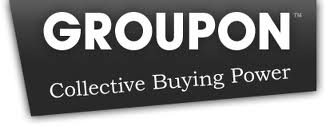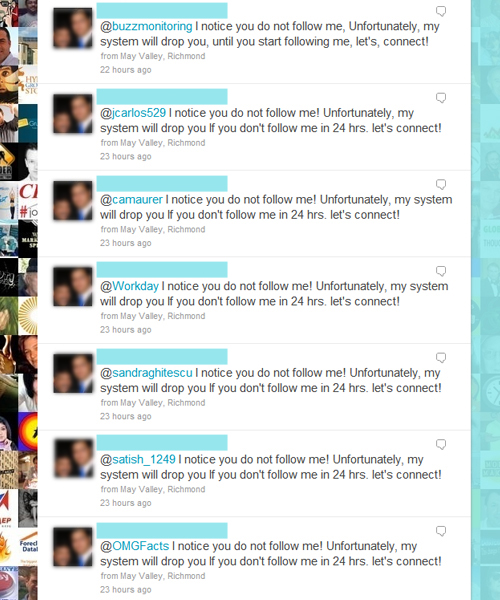Operations like Associated Content, Examiner and Demand Media source news and information from the crowd, rather than from the “professional” journalist. Add to that the increased sharing of resources between news organizations and disruption of business models around news gathering and the result is more formal, traditional reporters on the sidelines now and in the years to come.
If one of those sidelined journalists was ready, willing, and able to do all that’s described here, he or she would not likely be unemployed. So, an unemployed journalist might not actually fit the bill.
This post is quite simple and isn’t wholly novel. I’m writing it to establish basic thoughts toward organizing and designing a program that could be implemented internally by medium-sized businesses or provided externally as a service to small businesses. Most large businesses – as well as medium and small businesses already operating online with even a slight degree of sophistication – should have this all in play already.
Point of reference: I’ve heard that our local newspaper in Colorado Springs is selling the set up and running of Facebook pages for local advertisers. If true, it borders on criminal and points to a gaping market opportunity to help small businesses online.
Follow-up posts on this topic could include:
- profiles of companies killing it with content
- profiles of companies surprising me with content
- suggestions of companies for whom this system is feasible and ideal
- elements, specs and prices of a content creation kit
- designing a space to shoot photos and video
- designing a content strategy and plan
Anyway, here’s the deal …
Inbound Marketing
This term is used in contrast to traditional, outbound or interruption marketing. Inbound marketing tactics attract people actively seeking out your expertise, product or service. It’s a pull to traditional’s push.
Traditional includes television and radio commercials, newspaper and magazine ads and all those unsolicited pieces of mail you receive; marketers blast out unsolicited messages to anonymous masses. To be fair, many traditional approaches can be reasonably well targeted, so that the recipient of the message takes it as useful information rather than an annoyance. For example, we use those 20% off coupons from Bed Bath & Beyond; we receive them because we’re customers and have historically redeemed them.
Inbound includes blogs, search engine optimization and social media, among other tools and tactics. The basic concept: create and optimize online content to help people find you when they’re seeking the thing you do so expertly – the products you make or the services you provide. Generalizing: inbound is more measurable and cost-effective than traditional. It’s also got roots in permission – I’ve actively sought your information, message or offer – so conversion rates and word of mouth should be better.
MIT guys and HubSpot co-founders Brian Halligan and Dharmesh Shah wrote the book on inbound marketing … literally. It’s called Inbound Marketing. Both the book and their online software product provide a smart and systematic approach. The book’s a solid and reasonable read; it’s highly recommended.
It starts with identifying keywords related to your business or expertise. They must represent real estate that’s both valuable and available. That’s to say: people must be searching those terms, but they can’t already be “owned” by others. You should have this focus prior to creating, publishing and optimizing content.
You should also have the whole system organized around customer conversion – that action you want the inbound leads and prospects to take, whether it’s a purchase, a form fill, a phone call or any other behavior. Conversion is the entire point of the effort.
The Journalist
The content that serves as the foundation for inbound marketing is simply storytelling with words, photos, audio and video. That’s it.
Gathering facts. Asking questions. Telling stories. This is a journalist’s function. A print journalist should be more proficient with words and in depth. A broadcast journalist should be more proficient with video and with brevity.

This journalist's ready for anything; he's even got a back-up pair of hands. (Image from: figures.favorjoy.com)
Your employees, customers, partners and suppliers all have stories to tell about what you do and how and why you do it. You need someone to identify, develop and publish these stories. These stories – in words, photos and video – are the magnet for people seeking your expertise.
Success stories. Employee profiles. New product development. Industry news. Around the office. Behind the scenes. Company events. Industry trade shows. Who you are. What you’re about. How you work. What’s unique and differentiating. How customers are successfully using your product or service.
Send me an email or leave a comment on this post briefly describing your business and I’ll send you back three categories of content suitable to you. The opportunities are not endless, but there’s plenty of ripe, low-hanging fruit.
You just need someone to organize, manage and execute the storytelling system. Chief Journalist. Chief of Content. Content Creator. Resident Reporter.
The Distribution
You need not buy or earn media to get attention, though both routes may be important parts of an integrated marketing plan. Increasingly, advertisers are becoming their own media companies, creating content that people are seeking, finding, consuming and sharing. I wrote a month ago about two major advertisers, Best Buy and Johnson & Johnson, producing, publishing and selling advertising around their own content; they used to rely strictly on others publishing content and packaging audiences (TV, radio, print, etc).
Without turning your retail space into a television network, as Best Buy is doing, you can use basic tools – most of them free – to publish, tag and optimize your content.
A blog is an obvious start. In addition to being included in your blog posts, any photos you create can be put into Flickr, tagged extensively to help people find them, then linked back to your website, blog or any other context-appropriate place you’d like to direct motivated traffic. YouTube can be used identically for any video you create. iTunes or iTunes U are among several places to publish searchable audio (and video). Facebook, Twitter and LinkedIn are each highly populated places to consume, share and discuss content. A more sophisticated approach might include landing pages dedicated to particular products, services, concepts, topics or keywords. You may also want to organize your content into webinars, whitepapers or other formats.
The Bottom Line
A thoughtful, focused content creation strategy can complement beautifully more straightforward PR and marketing functions. It tells the story of you, your employees, your approach, your customers, your suppliers, your market, your industry and your expertise. It attracts and informs people. It initiates conversation and interaction.
Even if you have multiple contributors to the effort, one person should own it overall. A storyteller at heart, this person should be comfortable working with words, photos and video – writing, producing, shooting and editing. This person just might be an unemployed journalist … or a resourceful go-getter straight out of school with a journalism, communication or marketing bent.






